If you plan to set up an online ecommerce store, this article is for you.
You may have researched a bit about existing ecommerce platforms and compared their strengths and weaknesses. This is where you might have run into a common roadblock: The debate on WooCommerce vs PrestaShop.
So, which one should you choose for your online store?
Both platforms are great, and certainly, there is no clear winner. The choice depends on your online business’s nature and technical prowess. In this article, I will compare WooCommerce and PrestaShop to help you reach an informed decision.
Let’s first start by looking at the background of WooCommerce and PrestaShop and how these two ecommerce platforms emerge over time.
WooCommerce is an ecommerce plugin that allows you to set up an ecommerce store on a WordPress-powered website. Launched in 2011, WooCommerce has evolved into an ultimate ecommerce solution for both large and small online stores.

– Source: WooCommerce
When writing this article, WooCommerce is used by 28 percent of online stores, including some of the world’s top brands (see the following screenshot).
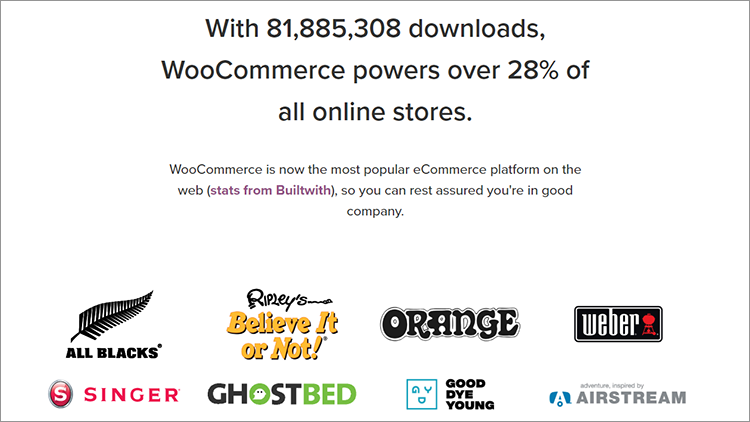
– Source: WooCommerce
Since WooCommerce is a free and open-source plugin, developers continuously contribute to improving the platform worldwide. As a result, you see a long list of WooCommerce features that include almost everything you would expect from a top-notch ecommerce platform.
PrestaShop has been around for a long time and has built a reputation as a dependable content management system for ecommerce stores. First released in 2007, it continues to be the choice of developers who build solutions for product management, billing, and shipping.

– Source: PrestaShop
Although PrestaShop can be adapted to any requirement, the main use case is an ecommerce store. This is where WooCommerce has a distinct edge because of the underlying flexibility of WordPress.
PrestaShop is an older platform that has continued to be one of the best options today. On the other hand, WooCommerce is relatively new but offers stiff competition to PrestaShop for the top position.
The following Google Trends graph displays the evolution of searches for both platforms to give you an idea of the competition. As you can see, WooCommerce is the faster-growing platform out there.
However, this graph should not be the only determining factor for your ecommerce store. You should play around with both platforms to assess the options and functions. Besides, both platforms support a host of extensions that extend the native capabilities. Similarly, you should also consider the possibility of the need for custom development (something you should discuss with a developer).
| Features | WooCommerce | PrestaShop |
| Content Management | WooCommerce has an underlying WordPress layer that offers multiple options. | PrestaShop has its own CMS that comes with a few limitations. |
| Product Management | WooCommerce uses WordPress’s post format to manage product data as posts. | PrestaShop is built exclusively for online stores, which defines a clear approach to product management |
| Stock Management | WooCommerce comes with free and paid extensions for stock management. | PrestaShop offers advanced stock control options such as auto notifications. |
| Customization Options | More than 50,000 free plugins and 1200 free themes are available on the WordPress repo. | PrestaShop Marketplace offers thousands of add-ons to make your store more functional. |
| SEO Optimization | Hundreds of SEO plugins are available such as Yoast SEO. | PrestaShop has a few SEO modules, and most of them are paid. |
| Product Selling | Allows selling of both physical and virtual products. | Allows selling of both physical and virtual products. |
| Store Statistics | WooCommerce offers detailed analytics on your store that reflects sales, revenue, traffic, and more. | PrestaShop offers store performance statistics about orders placed. |
| Speed and Security | Additional plugins may compromise WooCommerce speed and security. | PrestaShop is built for ecommerce and hence is focused on speed and security. |
| Multilingual Support | Simply integrate WPML, and your WooCommerce store will have multilingual support. | PrestaShop comes with an integrated module that enables multilingual support. |
| Development Support | WooCommerce doesn’t come with support but has a huge community ready to help. | PrestaShop is heavily documented, which includes solutions to all the issues you might face. |
| Pricing Plans | Free to download but involves other running costs. | Free to download but involves other running costs. |
Every platform offers a set of essential features that ecommerce store owners need for store operations. On top of this, the dev team tries to distinguish its product from the competition with features and extensions that add value to the store operations and user experience.
I have structured this analysis on several levels so that you can identify the right ecommerce platform for your business idea.
In this context, WooCommerce has a clear lead over the competition because of the underlying WordPress layer that provides excellent content management. PrestaShop has a CMS section to create your information pages, but with very limited options.
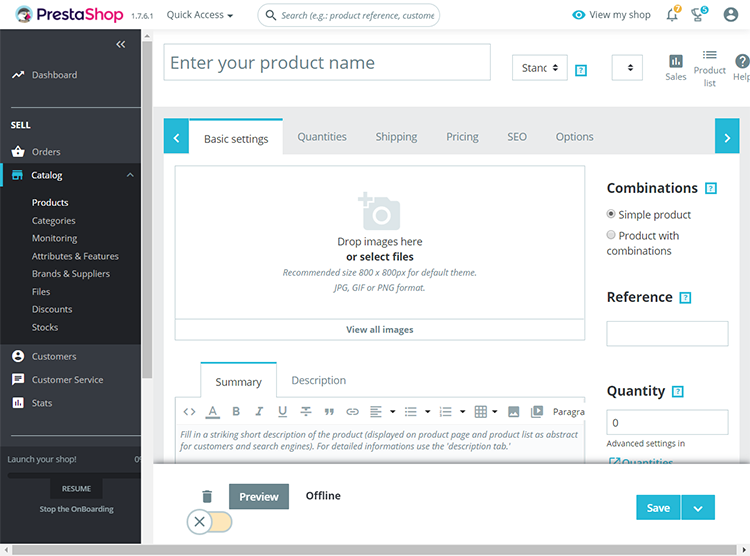
– PrestaShop Content Management
WordPress has Classic and Gutenberg Editor that allows you to create custom fields and edit all major aspects of pages. Since you need to manage a lot of content on store pages, WooCommerce is a great choice.
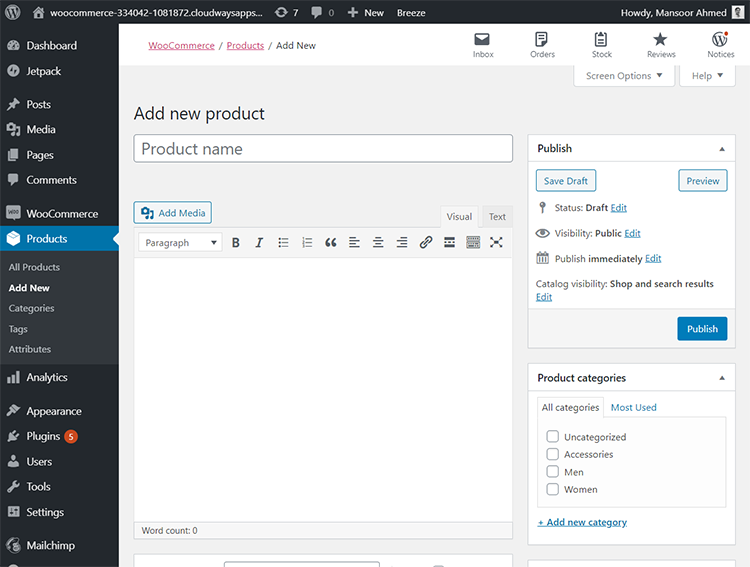
– WooCommerce Content Management
Both platforms offer a fairly easy-to-use management interface to manage product data (images and text). You can directly upload the data using an Excel file if the data is huge. Similarly, both platforms offer simple processes for making changes to product descriptions and related identifying data.
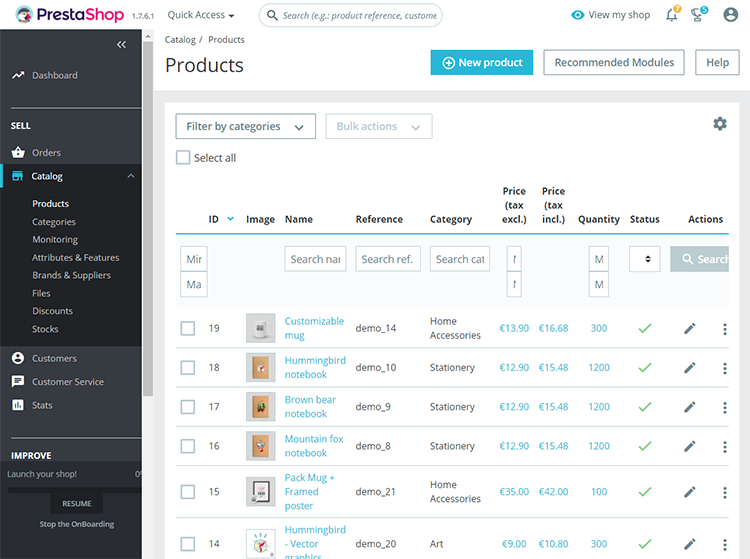
– PrestaShop Product Management
PrestaShop is built for the single purpose of creating online stores only, and thus, the approach is clearly defined to facilitate product data management. On the other hand, WooCommerce uses the WordPress post format and adapts it to manage product data as a post.
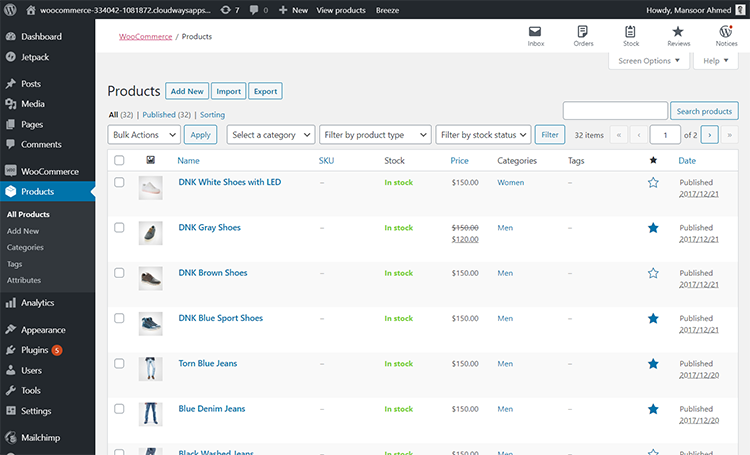
– WooCommerce Product Management
Both platforms allow you to keep tight control over the store stock control. In many cases, you clearly know the available stock and products available at the storefront. This functionality is optional and can be disabled to simulate an infinite stock if you have no stock problems.
PrestaShop offers advanced stock control options through which you can define several stores and receive notifications if the stock is getting low and what products are popular among your store audience. WooCommerce has free and paid extensions that go beyond simple stock management options.
In the WordPress plugin repository, you have more than 55,000 plugins and a large number of free extensions (although many have a paid version with extended features). Not all these plugins offer functionalities for WooCommerce, but it helps you get an idea of the options you have at your disposal.
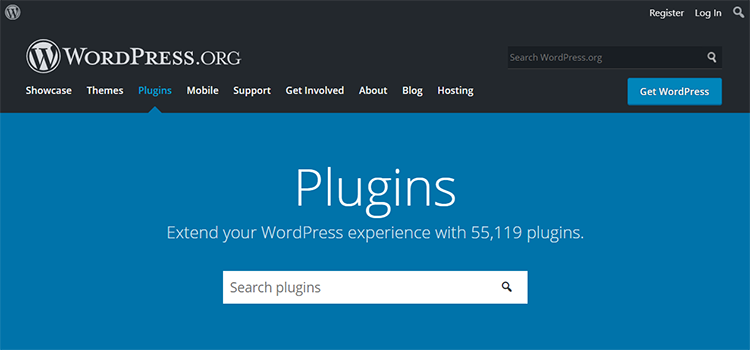
– WordPress Plugin Repository
The same goes for themes. While there are just over 1,200 themes in the official repository, many developers offer or sell their themes on marketplaces such as ThemeForest.

– WordPress Theme Directory
PrestaShop Marketplace has thousands of add-ons and modules to expand store functionalities. Similarly, the marketplace offers more than 4,000 templates to customize the storefront. The handicap: just a few of them are free.

– PrestaShop Marketplace
When considering PrestaShop templates, expect to pay from €80 to 100 for a complete template with good support. In the modules section, you start from €30 for a module to comply with the cookie law.
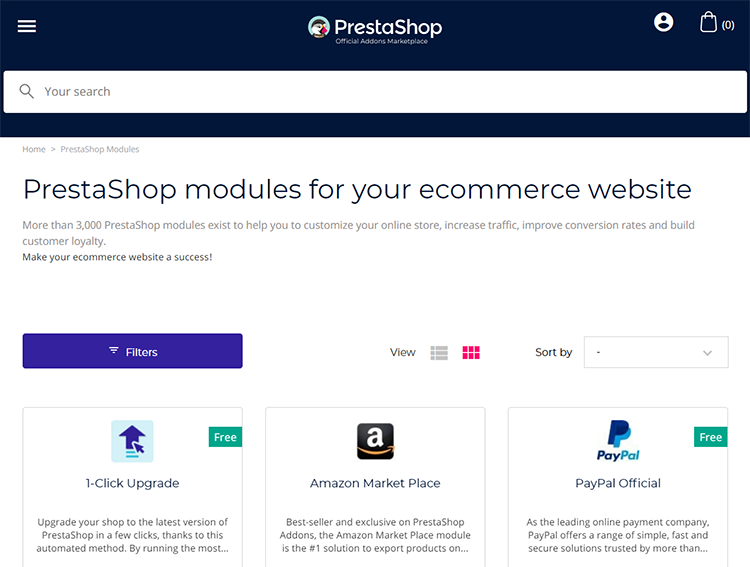
– PrestaShop Modules
For WooCommerce, you can find hundreds of plugins (I recommend Yoast SEO) that allow you to optimize almost all aspects of on-page SEO. In addition to boosting the organic positioning, these plugins also help you gain traction and reach for your brand.

– Yoast SEO Plugin
The main difference is that PrestaShop has few SEO-focused modules, and most are paid. Indeed, the categories and products are usually optimized for SEO, but the static PrestaShop pages are a bit limited and will not help too much in the SEO efforts.
We have a tie again on this point. Both platforms allow the creation of bulk products (grouping of several products), as well as the creation of combinations (products with variants of sizes and colors).
They also offer the possibility of selling virtual products through downloads and redeemable codes. This functionality is ideal for creating platforms for renting hotel rooms, buying event tickets, etc.
WooCommerce offers detailed store analytics that present sales, store revenue, top-selling products, monthly sales, and related statistics. Here’s a screenshot of WooCommerce Analytics.
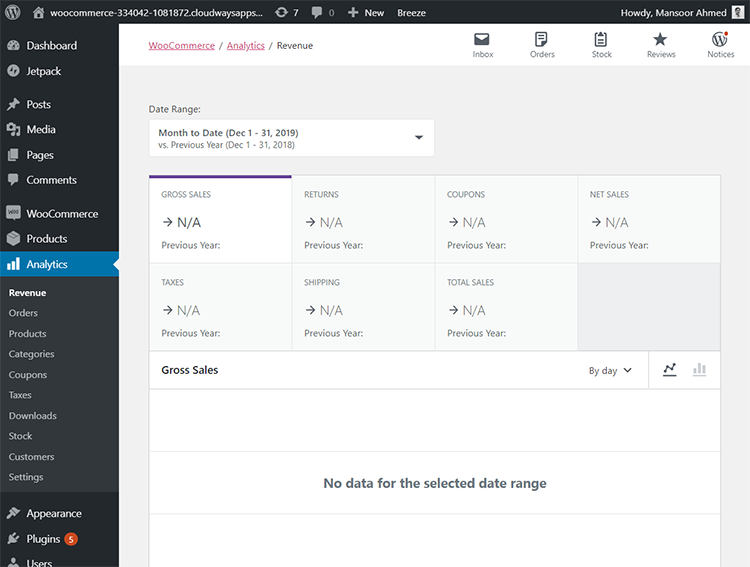
– WooCommerce Store Stats
PrestaShop also offers store performance statistics about the orders placed and the shopping baskets that were half-full. When opting for PrestaShop, it is always a good idea to include a plugin that provides advanced store analytics.
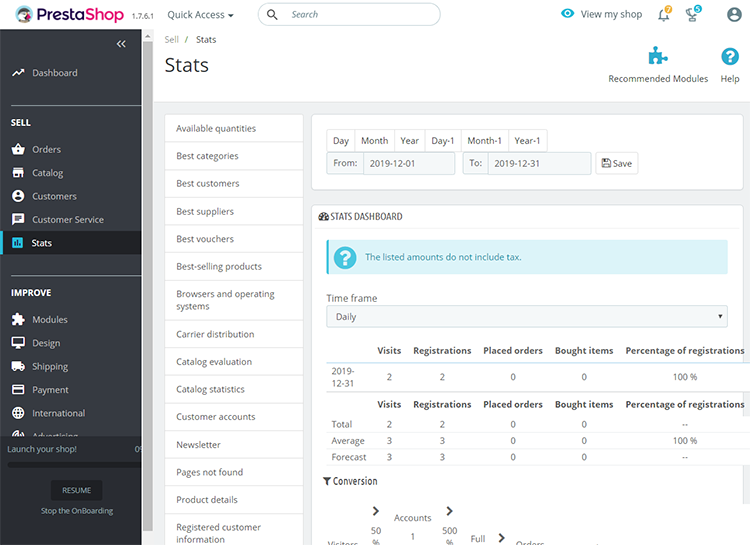
– PrestaShop Store Stats
That is why I recommend Google Analytics for an in-depth analysis of user behavior. You can also extract information about conversion funnels and obtain related user-behavior information so you have a clear idea of how to convert your visitors into customers.
On high-performing hosting solutions, both platforms are secure and offer good performance. Although here, you have to break a spear in favor of PrestaShop since it is primarily an ecommerce platform. Whereas, WooCommerce uses the underlying structure of WordPress (although this layer does not add significant performance overhead).
Plugins such as WooCommerce overexploit the WordPress structure to store all kinds of data in the option tables and input meta information. Because of this, the links between the different tables and basic data fields are not very efficient.
This fact does not negatively impact a database with a few hundred or thousands of items. However, the server overload increases noticeably when I talk about tens or hundreds of thousands of elements (be it a plugin or a theme).
Both platforms are compatible with selling products in multiple languages. For WooCommerce, you have the option to use WPML because of its excellent compatibility. Similarly, with PrestaShop, you get an integrated module for multilingual support.
WooCommerce and PrestaShop are very comprehensively documented and have a large community of developers. It is not difficult to find all the documentation, manuals, and answers to the most common questions.
Most of the PrestaShop add-ons/modules are usually paid. This provides a very important advantage over free developments. In the first place, they offer us some support and guarantee in the event of possible incidents.
On the contrary, there is a certain tendency to install free plugins/extensions on WooCommerce. Sometimes, they are standardized plugins (with their dedicated user community) with no risk. So, I think it’s a win-win situation for WooCommerce users.
Besides, sometimes these free plugins usually get their benefits from other sources, so we can be calm. But many other free plugins stop offering support after a while and even don’t update, so you sometimes open the door to a great source of vulnerabilities.
This is the most important question that comes to many users. If, at the purely ecommerce level, both platforms, WooCommerce and PrestaShop, are similar, is there a price difference? How much will it cost me? Let’s go by parts!
The latest versions of WooCommerce and PrestaShop are free to download. So if you are going to hire a developer, this decision should not affect the budget. Besides, I believe that you should opt for a hosting provider with better performance, security, and support.
However, there is a big difference between the extra functionalities that you will need for your store. If your online store is developed with PrestaShop, the modules you need will likely be paid for, and there are fewer (free) options to choose from.
So, if you have a fixed budget, you will want to continue improving the store (a requirement for keeping up with the competition). The recommendation is undoubtedly WooCommerce, as it doesn’t restrict you in any way.
WooCommerce vs PrestaShop: you have reached the end of my analysis, and it is time for you to draw your conclusions as both platforms are good solutions for your online ecommerce store. To help you choose from one of them, these are my recommendations.
WooCommerce, because it has managed to integrate all the good things about WordPress (and it is a lot to say) with all the efforts to continue improving this plugin for the development of online stores. And PrestaShop, because it has been around for a long time.
My recommendation is that WooCommerce will allow you to boost your online business with a much more 360 strategy than PrestaShop.
Now, if you already have a PrestaShop that you have been developing for some time and is kept up to date with the demands of the market and users, it may be worthwhile to continue trusting this platform before facing another major change towards WooCommerce.